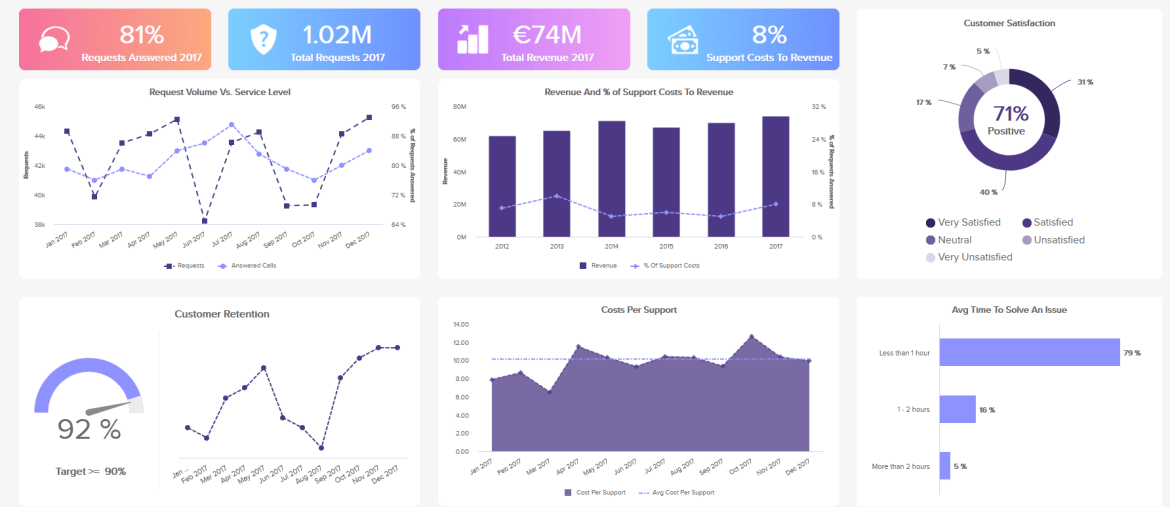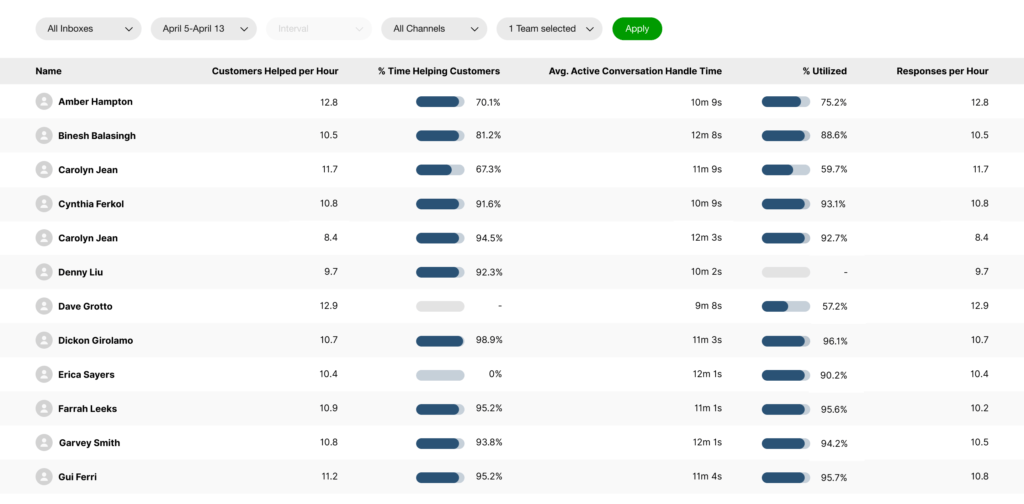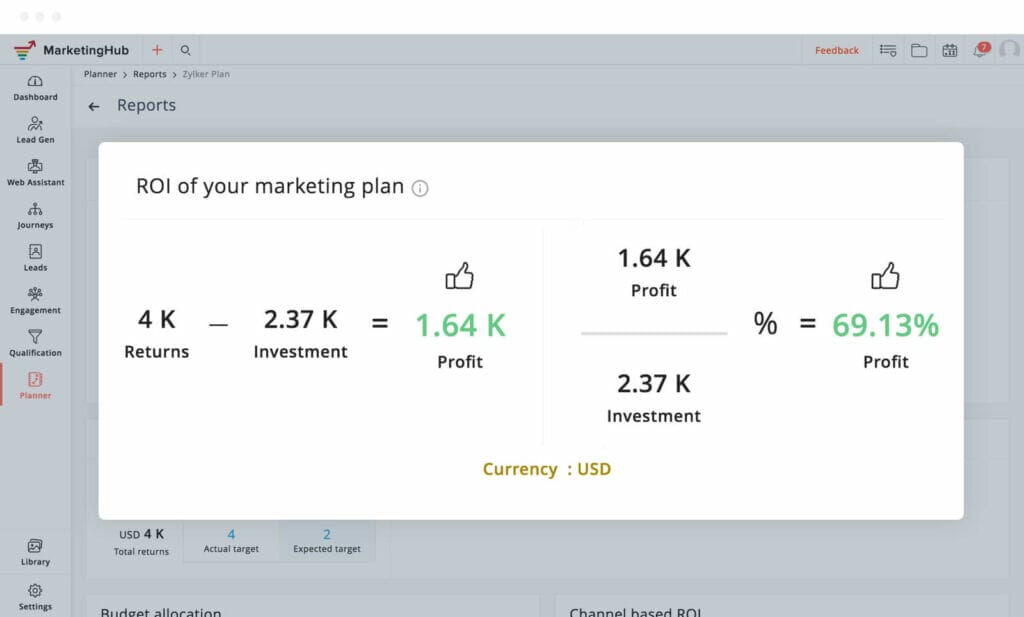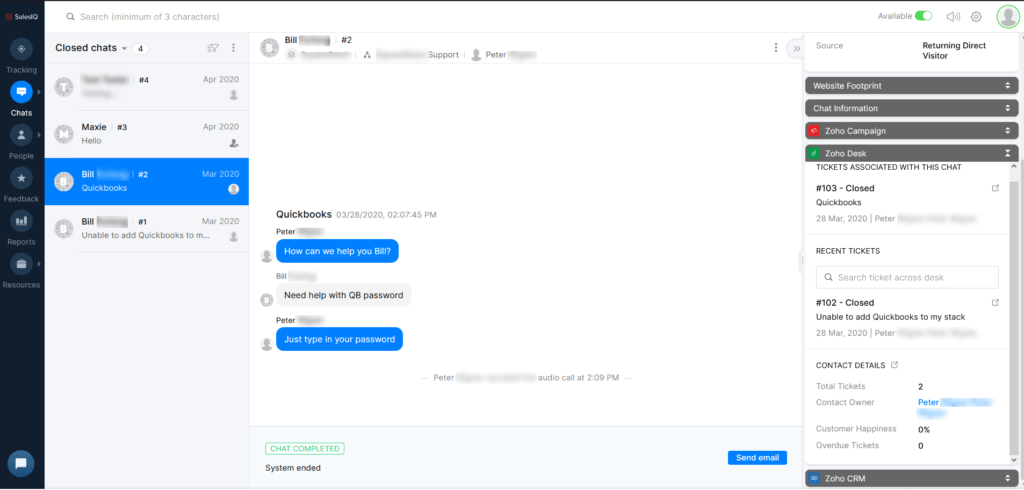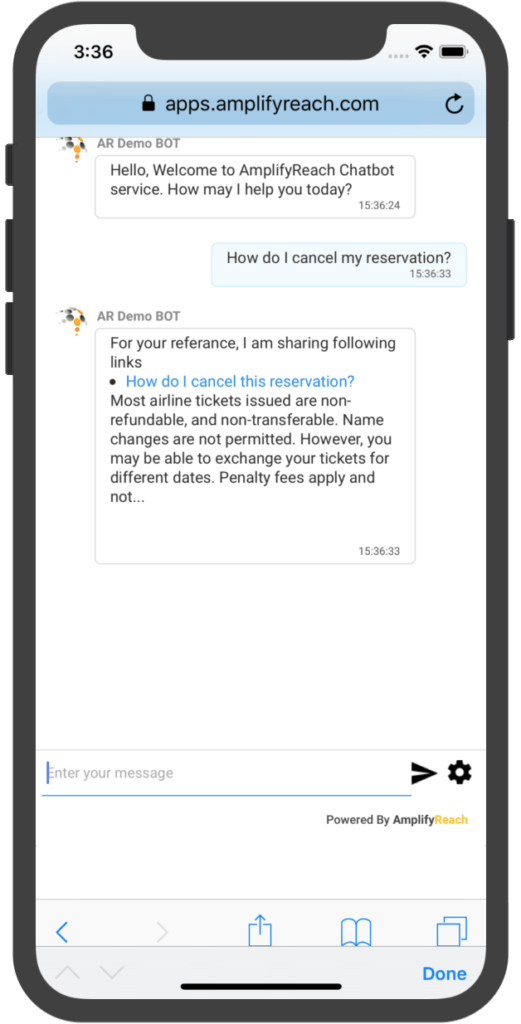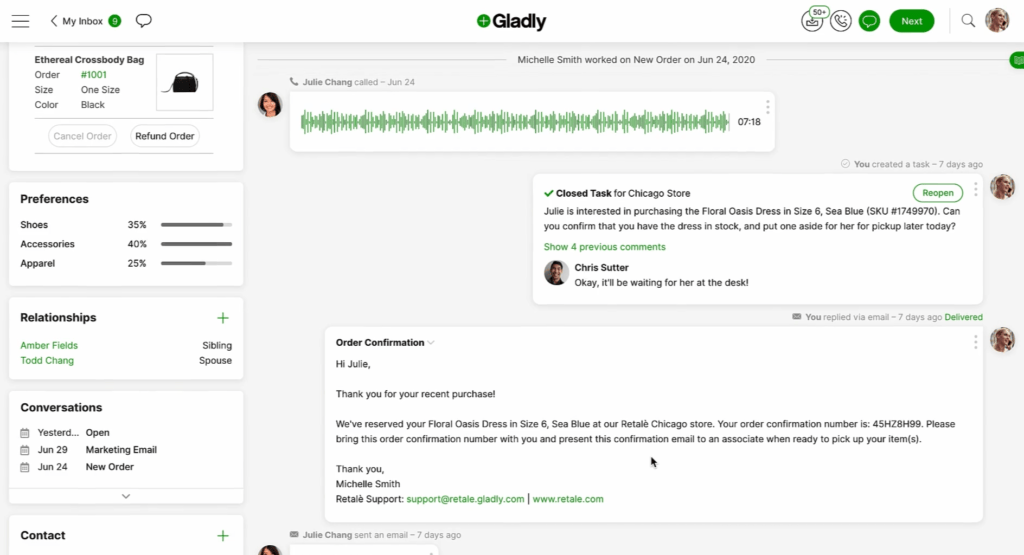[vc_row css=”.vc_custom_1621213557192{margin-top: -80px !important;}”][vc_column][vc_column_text]Customers are bound to have questions and encounter problems; live chat support equips you with an avenue to ensure they have a positive experience. For issues that cannot be resolved in a single chat session, a help desk that empowers users to see the status of their request will keep them at ease and allow you to ensure no customer goes unheard.
Customer support isn’t a single-focus operation, it also serves as a marketing channel – as well as an ideal tool to monitor changes in business strategy.
Does your new website generate more support requests? Did your latest marketing campaign frustrate users? Is there more churn?
These are all important questions that can be answered automatically with a proper customer support ecosystem.
support every channel
Customers all have unique preferences for methods of contact, be sure you can support them through at least major channels:
Customer surveys from 2020 state that 91% of customers still read their emails every day.
SMS
82% of people report opening every single SMS message they receive – that’s a huge opportunity to engage.
Onsite Support (chat, contact forms, helpdesk)
44% of online consumers state that having a live agent to provide responses via chat is a critical feature for them.
Social Media (direct messages and comments/posts/mentions)
Companies that ignore social media support requests see 15% higher churn rates, on average, than those who embrace social media communications.
Phone
Phone calls still account for 68% of all support interactions. Many customers prefer the speed of making a call and receiving live responses, especially when tensions are high.
Agent Experience
An effective support solution should empower agents, not frustrate them. Supporting multiple channels does not require multiple dedicated teams – nor should it.
It also should not force your existing support team to stretch themselves when introducing a new channel.
Integrating information and tools is the most effective way to empower your agents while simultaneously improving your customer service experience.
- Customer information needs to be easily accessible, from one interface.
- Formatted quick responses should be prepared, to ensure agents stay on brand and make efficient use of time
Customer experience
- Customers should get responses in a timely fashion
- Make information available through a bot, or on-screen knowledge base search
live chat + chat bots
utilize bots effectively
- Provide customers with simple information, such as order status
- Make important announcements via your chat bot, as another method of contact
- Prompt users with relevant content / help when they get stuck on a page
- Make sure your bot is helpful to users, without preventing them from easily reaching a human agent
Integrate with your other services
- Pull e-commerce information into chat to show purchase history, order status, etc.
- Send users a survey to gauge their satisfaction with support or with your brand overall
help desk + support tickets
empower support, rather than encumber them
Typically, support tickets & live chat sessions are connected – make sure agents can access information from both places; switching between platforms wastes time & increases the potential for missed requests.
This flow varies for every company & might not even be consistent across departments – but in general, we’re talking about providing context where it’s needed, when it’s needed.
For example, agents should not need to change windows to accept a call, or respond to a chat – or even update customer contact information.
Phone, Email & sms
phone
Incoming phone calls can be a huge distraction for support teams, especially when they’re actively supporting multiple other channels (chat, help desk, etc).
This can also start a customer interaction off on a negative note; as agents will typically need to lookup their account, past tickets or emails, purchases – whatever relevant information that pertains to their current call.
You can avoid this issue by integrating a call-center into your online help desk – which allows customers to continue calling like normal, but has the added benefit of allowing agents to keep focused.
When the call comes in, customer notes automatically appear in the call window – and all previous interactions are available instantly. There’s no wasted time looking up accounts – or potential for lost information while agents try to summarize their session after the call.
- Email is still an important method of contact; it’s readily available from every device.
91% of adults check their emails every day, but only 81% use SMS every day
SMS
- We can support SMS through integrations like Twilio, to create a seamless flow of communication across devices
- There are alternative options, such as forwarding SMS to email
Social media
Direct messages
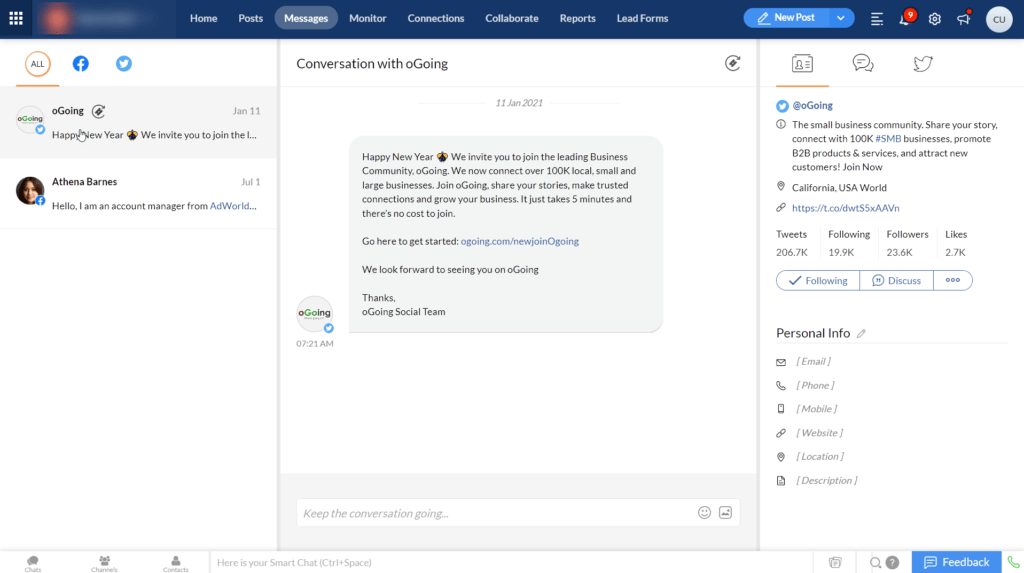
retweets, comments and posts
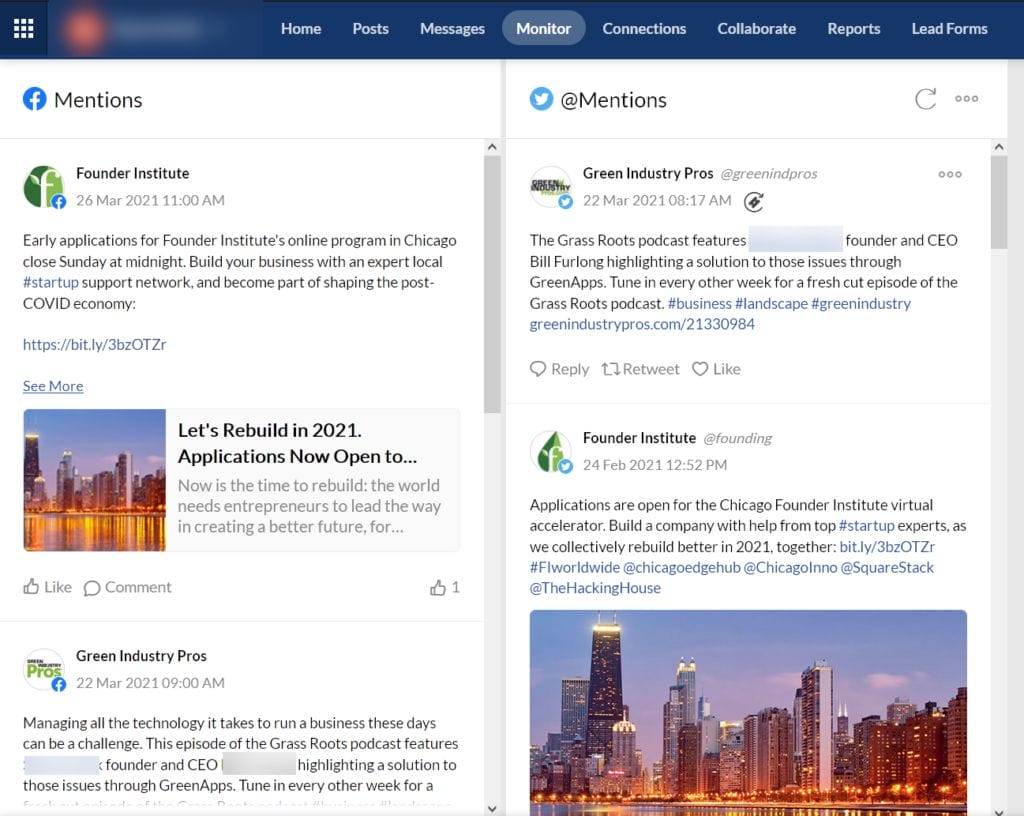
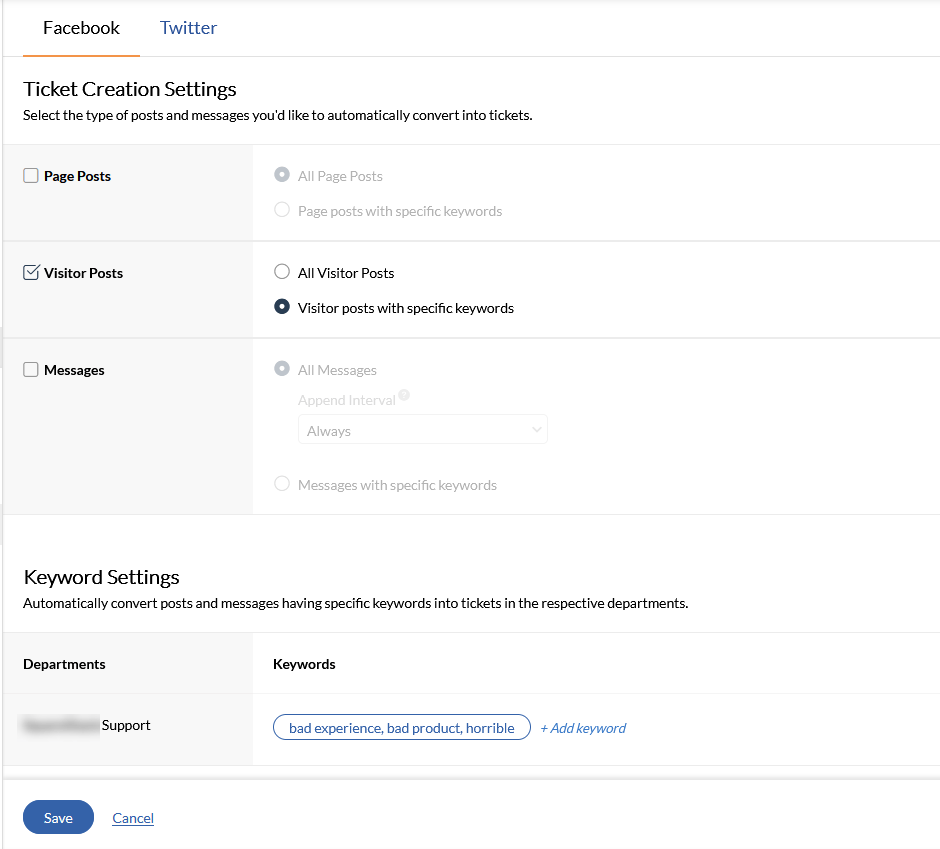
[/vc_column_text][vc_row_inner][vc_column_inner][vc_text_separator title=”Performance Monitoring”][/vc_column_inner][/vc_row_inner][vc_column_text]All of these tools & platforms mean nothing if there’s no tangible proof of improvement.
Through key metric reports, you can see only what matters to you – with just a glance.
